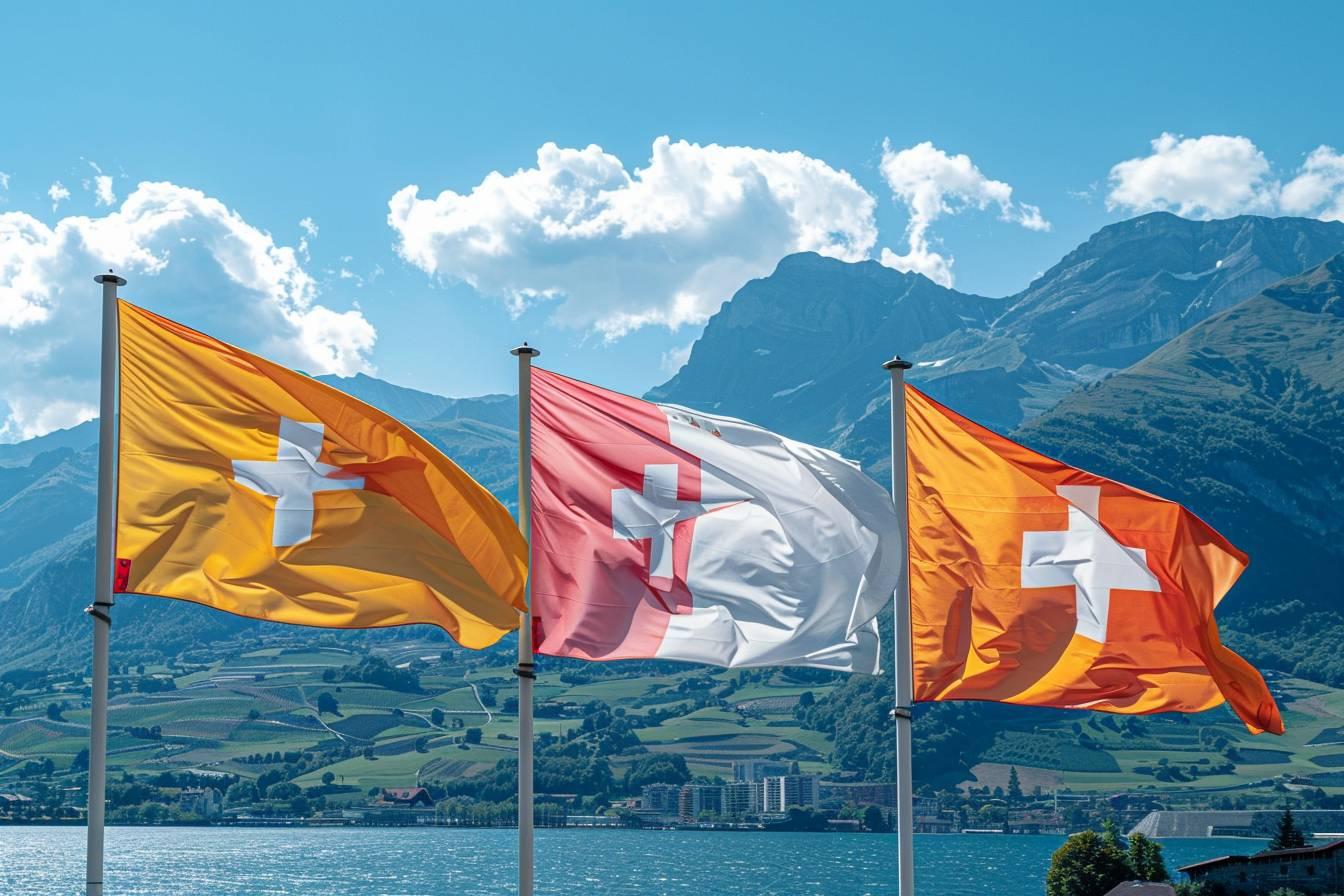Switzerland, nestled in the heart of Europe, is distinguished by its rich linguistic diversity. This small Alpine country is home to a fascinating linguistic landscape, reflecting its unique history and geography. Let’s discover the subtleties of this linguistic mosaic, a source of pride for the Swiss.
Official languages of the Swiss Confederation
Switzerland officially recognizes four national languages, each with its own importance and place in Swiss society. This linguistic diversity is enshrined in the Federal Constitution, testifying to the country’s commitment to multilingualism.
Here’s the breakdown of national languages in Switzerland:
- German: 62% of the population
- French: 23% of the population
- Italian: 8% of the population
- Romansh: 0.5% of the population
This linguistic diversity dates back to the 15th century, when the Swiss Confederation expanded. Since then, Switzerland has cultivated this cultural richness, making multilingualism an integral part of its national identity.
Thelearning of a second national language is compulsory in Swiss schools, reinforcing national cohesion and promoting communication between different linguistic regions.
Geographical distribution of languages in Switzerland
The distribution of languages in Switzerland follows a distinct geographical pattern, reflecting the history and cultural influences of each region. This linguistic distribution shapes the identity of each canton and influences the daily lives of the Swiss people.
German dominates in the north, east and center of the country. Nevertheless, it’s worth noting that Swiss German (Schwyzerdütsch), made up of various Alemannic dialects, is more commonly spoken than standard German.
French is the main language of the west, in the region known as Suisse Romande. The French spoken in Switzerland is very similar to that of France, with a few regional peculiarities.
Italian is predominant in the south, notably in the canton of Ticino. Romansh, though a minority language, is spoken in some valleys of Graubünden, Switzerland’s only officially trilingual canton.
Three cantons are officially bilingual: Berne, Fribourg and Valais. This linguistic diversity at cantonal level adds a further layer to the country’s linguistic complexity.
| Language | Main region | Special features |
|---|---|---|
| German | North, East, Central | Swiss German predominantly spoken |
| French | West | Similar to French |
| Italian | South (Ticino) | Influence of Italian culture |
| Romansh | Graubünden | Rhaeto-Romanic minority language |

Swiss plurilingualism: a richness and a challenge
Switzerland’s multilingualism is both a source of national pride and a daily challenge. This linguistic diversity offers undeniable advantages, but also poses certain communication challenges.
One remarkable aspect of Swiss multilingualism is the high number of polyglot people:
- 38% of Swiss use at least two languages at work
- 21% speak several languages at home
This ability to juggle languages is a precious asset in an increasingly globalized world. It fosters open-mindedness, intercultural understanding and increased professional opportunities.
Yet linguistic diversity can sometimes create communication barriers, particularly in federal institutions or companies operating on a national scale. To overcome these challenges, Switzerland has put in place language policies designed to promote mutual understanding and preserve the balance between different linguistic communities.
English is gaining ground in Switzerland, particularly in the professional world. Although it is not a national language, its growing use bears witness to Switzerland’s openness to the world and its adaptation to global trends.
Beyond national languages: wider linguistic diversity
Switzerland’s linguistic wealth is not limited to its four national languages. The country is home to a mosaic of languages and dialects that contribute to its unique linguistic landscape.
Dialects and regional languages include :
- Franco-Provençal
- Franco-Comtois
- Lombard
Although less widespread, these language varieties are an integral part of Switzerland’s cultural heritage, and bear witness to the country’s complex history.
Switzerland officially recognizes the languages of nomadic peoples, such as Yenish and Romany. This recognition reflects the country’s commitment to cultural and linguistic diversity.
Immigration has also helped to enrich the Swiss linguistic landscape. Languages such as Portuguese, Albanian and various Balkan languages are now spoken by sizeable communities in Switzerland.
Interestingly, interest in learning Chinese has declined in recent years, in favor of other Asian languages such as Korean and Japanese. This trend reflects changes in global cultural and economic trends.
Finally, Switzerland offers an exciting example of linguistic coexistence. Far from being an obstacle, its linguistic diversity is celebrated as a national treasure. It embodies the values of tolerance, mutual respect and openness that characterize the Swiss identity. In an increasingly interconnected world, the Swiss experience of multilingualism offers valuable lessons on how to navigate cultural and linguistic diversity.
